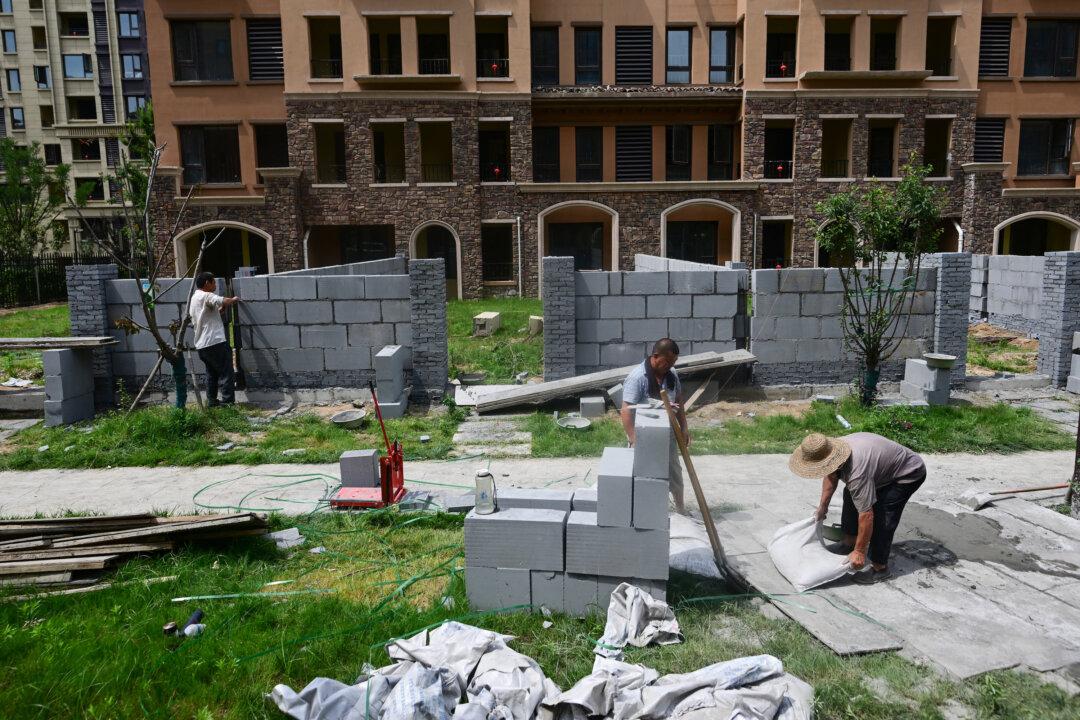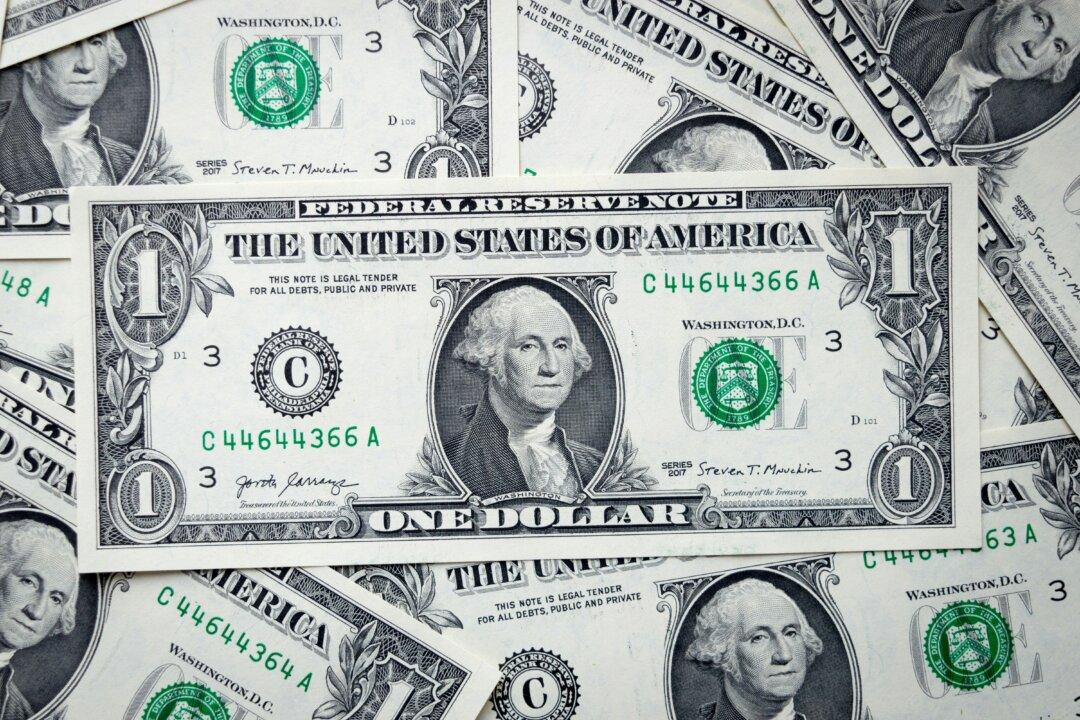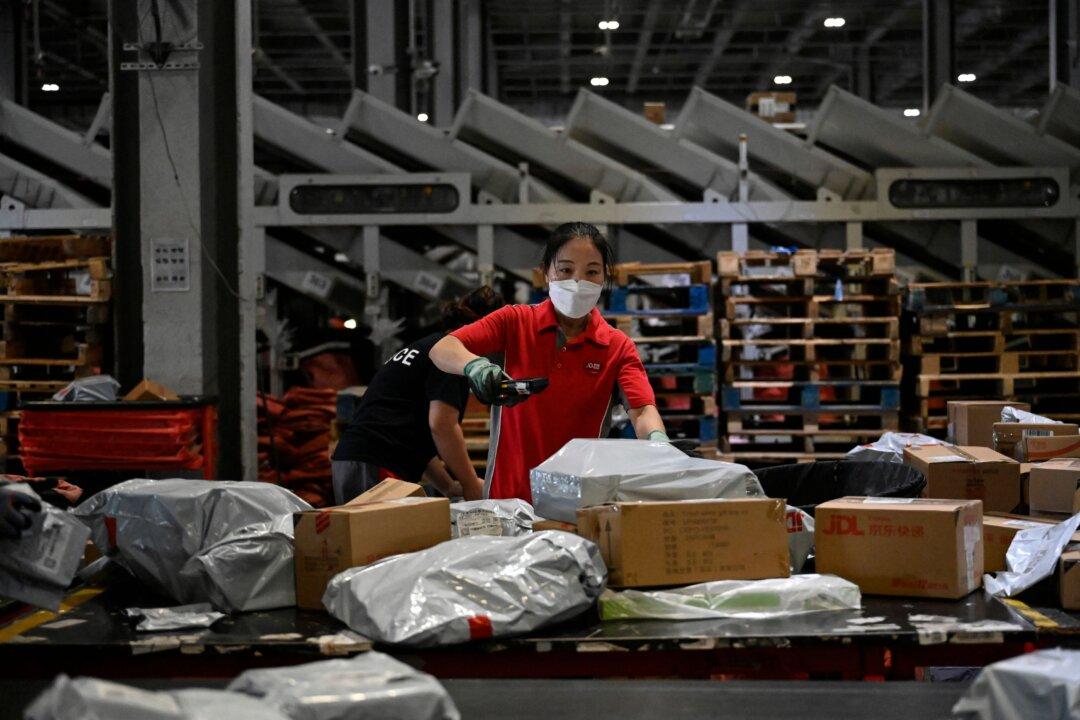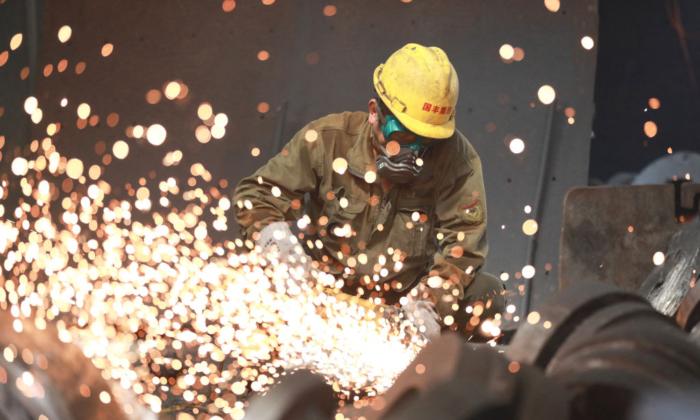Much has happened in China over the past month: from the property policy shift announced at April’s Politburo meeting, sparking investor excitement, to China’s effort to address its property inventory overhang, to a steep increase in U.S. tariffs on an array of Chinese imports.
Yet the broader landscape of the Chinese economy remains largely unchanged by the measures announced by Chinese authorities recently. Ultimately, they offer muted near-term growth prospects.
This is the view of Goldman Sachs, which, in a research note on May 22 about China’s latest economic situation, said, “Beneath the surface, these dramatic headlines have limited near-term growth implications.” The note added, “The fundamental picture of the Chinese economy has not changed much.”
Recent weeks in China have seen a flurry of attention-grabbing economic headlines.
Also in April, during its Politburo meeting, China’s top decision-making body shifted its ideological stance from “houses are for sheltering, not for speculating” to a new focus on “studying how to digest the existing housing inventory and optimize the new housing supply.”
On May 14, U.S. President Joe Biden announced significant tariff increases on a range of Chinese imports, including electric vehicle (EV) batteries, computer chips, and medical products. This move risks an election-year standoff with Beijing as President Joe Biden aims to appeal to American voters who are critical of his economic policies.
On May 17, China announced “historic” measures to stabilize its crisis-hit property sector. Those include allowing local governments to purchase unsold apartments, relaxing mortgage rules, and pledging further efforts to complete unfinished homes.
Property Strategy Challenging
However, according to Goldman Sachs, while the government’s focus on addressing the inventory overhang problem is an encouraging shift in the right direction, there are “plenty of challenges in execution” for that strategy.First, the fundamentals of the property market and closely related industries are still very weak.
For instance, millions of apartments and homes remain unsold and unfinished, affecting the construction industry, which encompasses not only residential and commercial developments but also schools, hospitals, airports, sports stadiums, and public utilities.
Additionally, the slump has impacted consumer-facing industries and fintech, particularly in the property technology market.
Moreover, the amount of funding announced so far to revitalize the sector falls far short of what is needed, according to the global investment banker.
“By any calculation, the amount of funding provided so far is nowhere near what is needed given the scale of the problem,” wrote Goldman Sachs in the May 22 note.
The investment banker added that it estimates new home sales in China for 2023 totaled approximately 1 billion square meters in area and 10 trillion yuan (about $1.38 trillion) in value.
Based on these sales figures, bringing all developers’ “saleable” projects to market in 2024 would result in about two years of supply, equivalent to 20 trillion-yuan ($2.76 trillion) worth of new home inventory at current market prices.
“In this context, 300 billion yuan looks insufficient,” the note said.
Beyond funding issues, the effectiveness of the latest property easing measures also depends heavily on household behavior, which may differ significantly from previous cycles, says Goldman Sachs. Under the “housing is for living in, not for speculation” mantra, property demand is driven by life events such as marriages and childbirths.
Industrial Excesses Persist
Nevertheless, while the government has acknowledged the oversupply problem in the property market and adjusted its policies accordingly, it has not taken similar actions on China’s manufacturing sector excesses, according to Goldman Sachs.According to the investment banker, over the past five years, exports have been the sole sector experiencing significantly accelerated growth compared to the previous five years. In contrast, domestic demand growth has markedly declined. The decline is partly attributed to the impact of the COVID-19 pandemic and the government’s regulatory tightening across the education, internet, and property sectors.
Additionally, China’s policymakers remain focused on advancing “new industrialization,” aiming to enhance the nation’s global share of goods production and ascend the value chain into higher-tech manufacturing sectors.
The combination of “strong exports and weak domestic demand” has resulted in increasing output and declining prices across industrial sectors, indicating oversupply.
“Systemic bias toward supporting producers rather than households or consumers allows Chinese firms to ramp up production despite low margins without the fear of bankruptcy that constrains firms in market economies,” the research firm stated.
“When domestic demand is weak and output continues to grow, exports will be a pressure release valve,” said Goldman Sachs, adding that the situation will invariably translate into burgeoning trade surpluses with China’s global trade partners.
According to the investment bank, “China’s dominant share in global manufacturing and large trade surpluses have started to make trading partners uneasy. Both talk and actions regarding tariffs on Chinese goods are on the rise.”
It projects that in the medium term, as Chinese exports expand their market presence globally and policymakers “continue to encourage self-reliance and import substitution domestically,” Chinese trade surpluses and global trade imbalances will escalate.
This, in turn, will intensify “trading partners’ pushback,” it adds.
That’s happening. Apart from the tariff increase on Chinese imports announced on May 14, the Biden administration also disclosed on May 16 its decision to terminate a tariff waiver on solar panels manufactured by Chinese companies in Malaysia, Cambodia, Thailand, and Vietnam.
If re-elected, former President Trump has proposed increasing U.S. imports from China by 60 percent and imposing a 200 percent tariff on Chinese cars manufactured in Mexico.
Currently, the European Union is conducting investigations into various Chinese products, such as steel, wood flooring, medical devices, wind turbines, and electric vehicles, which may result in tariff hikes in the coming months.
“Increased Chinese trade surpluses and growing global trade imbalances will lead to intensifying trade tensions, which in turn should weigh on the Chinese economy.” Goldman Sachs said, adding that the “rising trade tensions are one of the reasons behind our cautious view on China’s medium-term growth outlook.”







